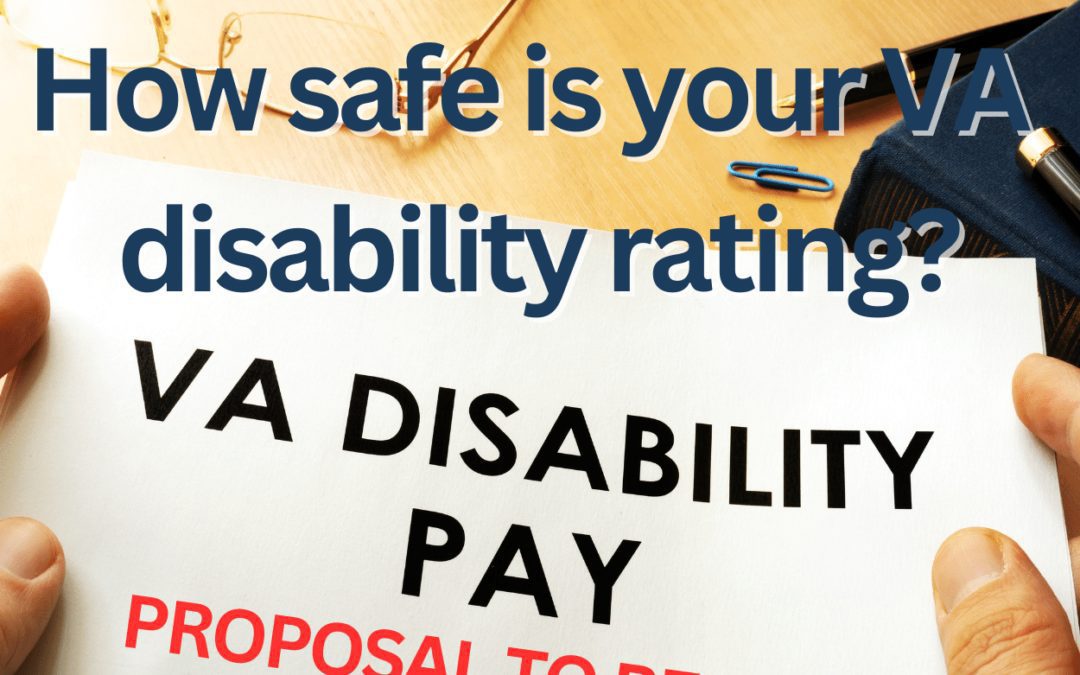Many Veterans come to rely upon their disability ratings to provide a certain amount of income per month. Unfortunately, what many do not know, is their ratings are not necessarily permanent, despite the seemingly obvious nature of the disability. The VA can, and often does, reduce disability ratings. As many Veterans assume these ratings are static, this can come as a devastating surprise when not prepared for the possibility. In this article, we will cover some of the basic principles behind the nature of these ratings and how safe they really are.
Protected Ratings. Due to the nature of the 38 Code of Federal Regulations (hereinafter referred to as the “38 CFR”), no VA disability rating, including those considered “Permanent and Total,” are actually “safe” until they have been in effect for 20 years per 38 CFR § 3.951 (b), at which time they are finally considered a “Protected Rating.” The concept of “Protected Ratings” is explained in depth in the VA’s Adjudication Procedures Manual (hereinafter referred to as the “M21-1”) under M21-1III_iv_8_SecC (1).
The 5 Year Rule. According to 38 CFR § 3.327, a rating the VA considers likely to improve within 5 years can be re-examined. After 5 years, such ratings cannot be re-evaluated unless a new claim is initiated by the Veteran. In practice, such ratings are frequently reduced by the VA and should not be considered reliable.
The 10 Year Rule. According to 38 CFR § 3.957, a disability rating cannot be “severed” after having been in effect for 10 years unless the VA can prove fraud was used to obtain the benefit or the character of discharge was misrepresented. This rule, however, does not protect the rating percentage. In practical terms, after a rating has been in effect for 10 years, your rating can be reduced but not removed.
What this all means. Practically speaking, the filing of any claim before your ratings have become “protected” bears the risk of re-evaluation by the VA which may result in a reduction of individual ratings, severance of an incorrectly-granted rating, and in effect, a loss or reduction of the overall disability rating.
How to protect your ratings. There are several things you can do to protect yourself and your hard-won disability rating:
- Establish a relationship with an accredited and experienced Veteran Service Officer. A VSO will provide free, expert advise, and be there to help you fight the VA should you receive a “proposal to reduce.”
- Maintain routine care for all rated disabilities. Basically, make sure you are receiving professional care several times a year for any rating you have. Frequently, we see ratings reduced where the Veteran has not been able to show ongoing treatment. Simply maintaining ongoing care can often keep the VA at bay.
- Do not oversell your recovery. Often, given the nature of many Veterans, there is a tendency to report your condition is better than it really is to your care providers. Such a seemingly simple oversight can give the VA what it needs to reduce your rating. Just be honest and report the aches, pains, and problems you are dealing with as they are on your worst days, not your best days.

